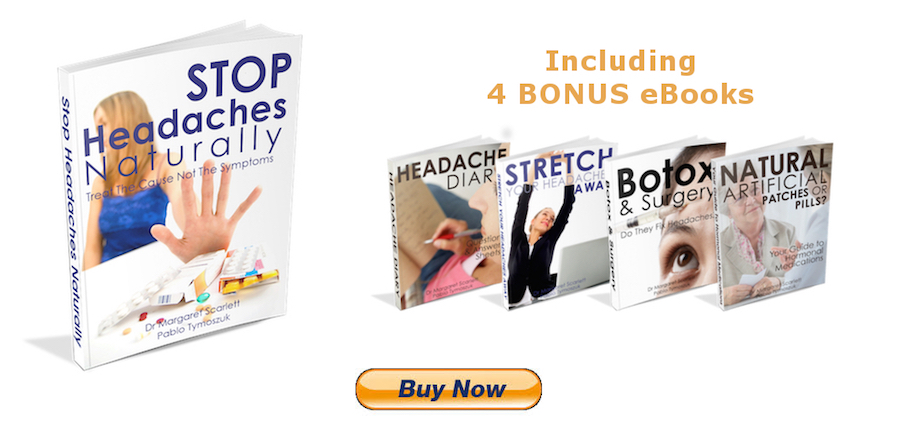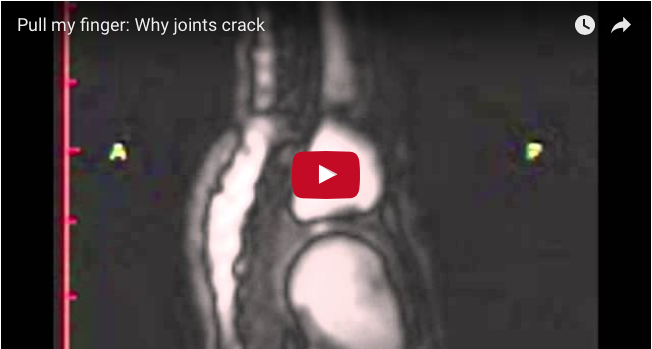Does Adding Epsom Salts To Your Bath Ease Muscle Pain?
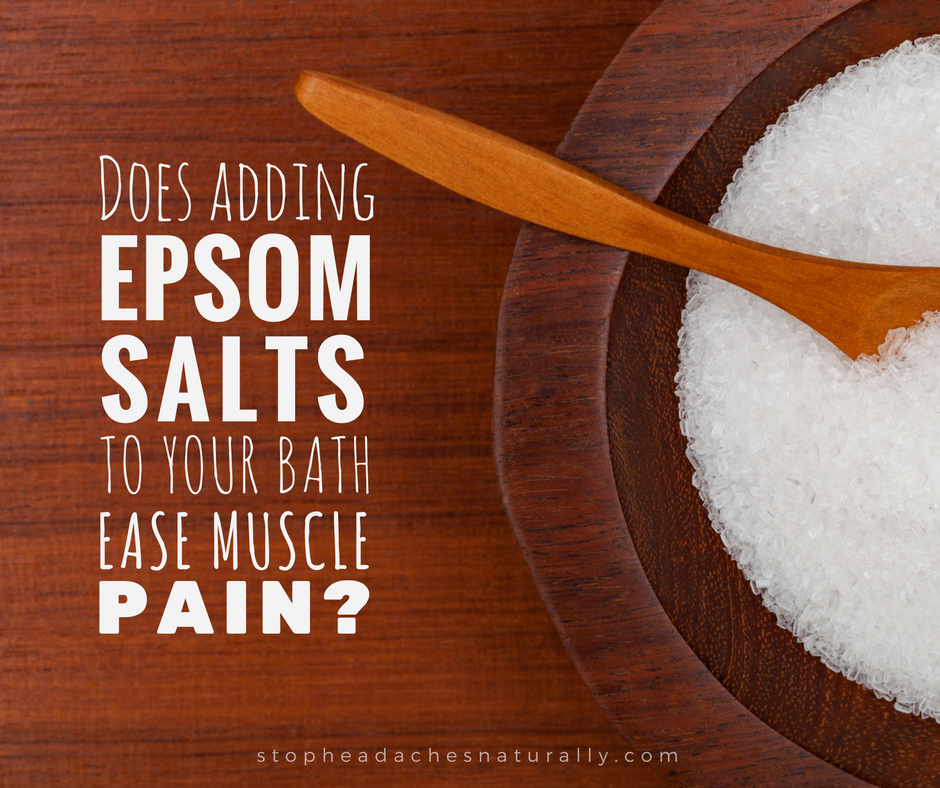
Adding Epsom salts can make your bath more effective. This is an old home remedy for easing muscle pain which is still widely used today. It is not just an old wives’ tale – there are good reasons for thinking it will help your muscles and your headaches.
Epsom salts act as a source of magnesium ions. These play an essential role in body chemistry, including the maintenance of normal functioning of nerves and muscles.
"Epsom salts act as a source of magnesium ions… including the maintenance of normal functioning of nerves and muscles."
Many headache sufferers have lower than normal levels of magnesium ions in their blood and brain [5,6,7,8] and intravenous magnesium will often quickly relieve a headache attack.[8,9]
Magnesium ions can also enter the bloodstream by absorption across the skin [10,11]. A small study showed that soaking in an Epsom salt bath for 12 minutes two times a week should be sufficient to restore normal levels.[11] The effects on headaches have not been studied but it seems well worth trying.
"Many headache sufferers have lower than normal levels of magnesium."
You will need about 2 cups of Epsom salts in a standard sized bath tub.
If you suffer from migraines, you may have noticed that your hands and feet tend that tend to get colder before and during an attack.
For many people this is a reliable early warning sign.
A warm bath taken at this stage will help prevent the attack from progressing further by drawing blood away from your head towards your extremities.
This is an excerpt from the ebook Stop Headaches Naturally - Chapter 11.15 - Heat, Cold and other Therapies
References:
[5] P Sarchielli, G Coata, C Firenze, P Morucci, G Abbritti and V Gallai (1992). “Serum and salivary magnesium levels in migraine and tension-type headache. Results in a group of adult patients.” Cephalalgia 12(1): 21-27.
[6] BM Altura and BT Altura (1996). “Role of magnesium in patho-physiological processes and the clinical utility of magnesium ion selective electrodes.” Scand J Clin Lab Invest Suppl 224: 211-234.
[7] A Mauskop, BT Altura, RQ Cracco and BM Altura (1993). “Deficiency in serum ionized magnesium but not total magnesium in patients with migraines. Possible role of ICa2+/IMg2+ ratio.” Headache 33(3): 135-138.
[8] A Mauskop and BM Altura (1998). “Role of magnesium in the pathogenesis and treatment of migraines.” Clin Neurosci 5(1): 24-27.
[9] A Mauskop, BT Altura, RQ Cracco and BM Altura (1996). “Intravenous magnesium sulfate rapidly alleviates headaches of various types.” Headache 36(3): 154-160.
[10] H Laudańska, A Lemancewicz, M Kretowska, T Reduta and T Laudański (2002). “Permeability of human skin to selected anions and cations--in vitro studies.” Commun Mol Pathol Pharmacol 112(1-4): 16-26.
[11] Dr RH Waring (2009). “Report on Absorption of magnesium sulfate (Epsom salts) across the skin.”
Can A Happy Spouse Be Good For Your Health?

Happy hubby, happy wifey…
A recent study published in the Health Psychology Journal suggests that having a happy spouse is good for your health. Nearly 2,000 couples aged between 50 and 94 were asked about their happiness, health and exercise levels over the course of six years and these are some of the findings:
- Happy spouses are more likely to provide strong social support, such as caretaking
- Happy spouses encourage their partners to adapt healthy habits - regular exercise, eating well and adequate sleep
- Having a happy partner may enhance health and make life easier
So as the saying goes, “Happy wife, happy life” but now we can add, “Happy hubby, happy wifey.”
3 Reasons You Have Headache Pain
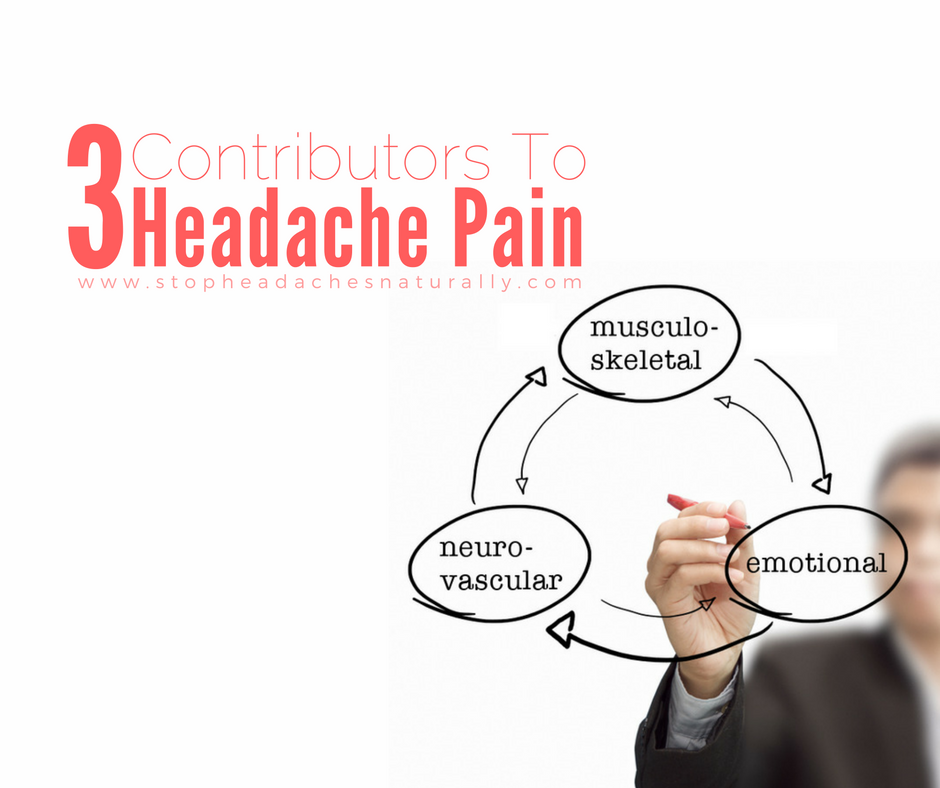
When we started writing this book our focus was on headaches provoked by musculoskeletal problems, and especially by muscular trigger points. However many other factors unrelated to musculoskeletal problems are known to provoke headache attacks, including tiredness, dehydration, certain foods, changes in female hormone levels and flashing lights, to name but a few.
We wanted this book to be useful to as wide range of headache sufferers as possible, so we decided to increase its scope to cover such cases. However we then faced the problem of how to unify all of this information.
From our research we came up with a simple model based on the nature of headache pain. In this model, headache pain arises from a combination of 3 separate contributions:
1. A musculoskeletal contribution – due to problems with muscles and joints
2. A neurovascular contribution – due to changes in nerve activity and blood flow in parts of the brain
3. An emotional stress contribution – this acts like a pain volume control
Reducing any one of these contributions lessens the pain you feel. It may even lessen it sufficiently to prevent a headache from occurring in the first place.
"Reducing any one of these contributions lessens the pain you feel."
There are a number of natural methods available to reduce each of these contributions. For example, the contribution to headache pain from musculoskeletal problems can be readily treated by manual therapy, together with correction of posture, stretching and strengthening of postural muscles.
Emotional stress can be treated by a variety of techniques including relaxation, biofeedback and altering negative thought patterns. The neurovascular contribution can be reduced by making changes to your lifestyle, environment and diet and by reducing emotional stress.
These techniques and more are covered in this book.
This is an excerpt from the ebook Stop Headaches Naturally - Introduction: A Model For Headache Pain
Steve Huffman Shares 5 Secrets For Success

Recently on BBC News video, Reddit CEO Steve Huffman shared 5 secrets for success:
1. Take time to sleep, take time to think and don’t reply to every email.
2. If I could go back and tell myself one thing, it’s basically that the job is all about time and stress management more than anything else, and that is something you’re in complete control over.
3. You don’t have to answer every email, your first priority is to your business and to yourself.
4. If you’re not sleeping you can’t make decisions, you can’t handle stress, you won’t be able to think clearly, and setting aside time to actually think about the future is really valuable.
5. Sleep deprivation also leaves people in a state in which they are more reactive to stress. They are more likely to be stressed out about things that might not otherwise be seen as a big deal, and more likely to have negative emotional responses to events they encounter.
NOTE: Sleep disruption is one of the most important migraine and headache triggers
Arabica vs Robusta Coffee

Coffee made from Robusta beans is bitter and is commonly described as ’burnt tyres or rubbery.’
Robusta has 2.7% caffeine content, almost double the 1.5% of Arabica
"It makes sense to drink coffee only made with Arabica beans."
Arabica contains almost 60% more lipids and nearly twice the amount of sugar - that’s why it tastes better.
NOTE:
Robusta beans are primarily used in instant coffee and is also blended with Arabica beans in numerous coffee capsules. If you suffer from headaches, it makes sense to drink coffee only made with Arabica beans. This will allow you to enjoy a daily cup of coffee without the excess caffeine triggering a headache.
Caffeine is extremely stable during the roasting process so both dark and light roast coffee beans have the same amount of caffeine
The Promise - The Lure Of The Quick Fix
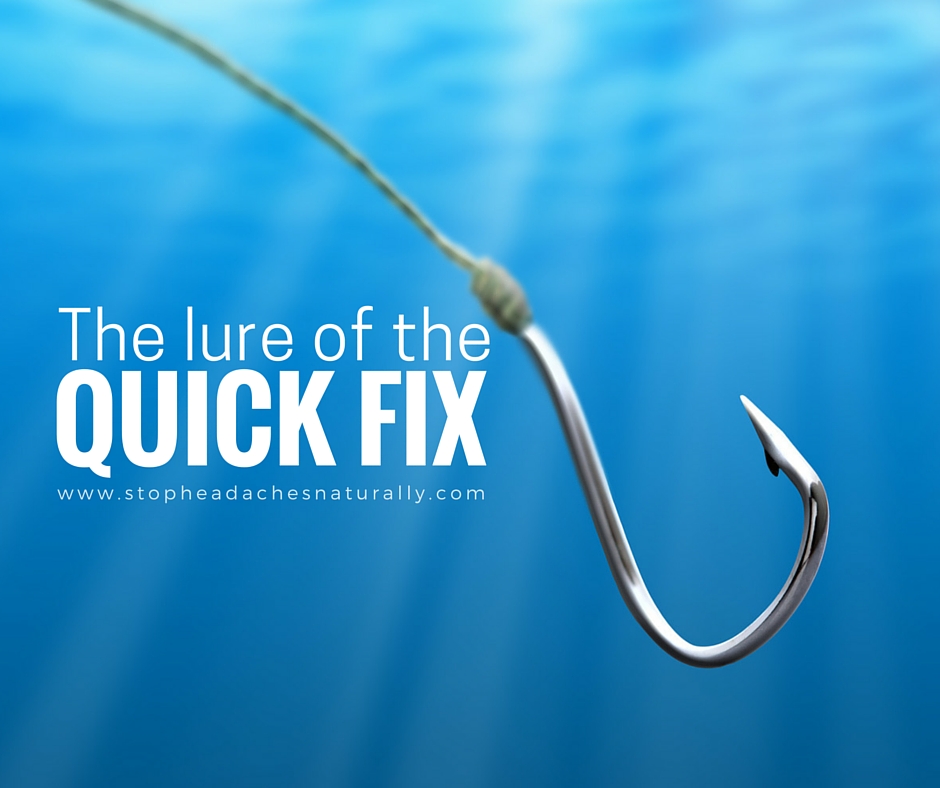
Our pre-occupation as a society with the short term quick fix is one of the factors responsible for over-reliance on pain-killers.
When time is money and a “can do” attitude is paramount, we may feel we can’t afford to be ill or to be functioning below our best.
Instead of taking time out to look after our health, when something goes wrong we look to medication to fix the problem.
"We look to medication to fix the problem"
The following quote typifies the “pop a pill and forget it” attitude that is so prevalent:
"It's never a great start to the day when you wake up with a pounding headache. Fortunately, help is often as close as your medicine cabinet. You can pop a couple of aspirin, close your eyes, and, in all likelihood, that throbbing in your head will be soothed within the hour.
You’re in good company in your choice of remedy. Some 80 billion aspirin tablets are taken worldwide, every year, for all types of headaches including the excruciatingly painful form known as a migraine. That's a lot of pharmacological muscle."
If you think this was written by an advertising executive for a pharmaceutical company you would be incorrect.
Disturbingly, it was actually taken from a reputable internet site offering health advice to the general public.
However there is no doubt that pharmaceutical advertising helps foster the idea that medication can provide solutions to all of your health problems.
This is an excerpt from Stop Headaches Naturally Chapter 6.6 - The promise - the lure of the quick fix
Be Your Own Doctor

Even though there is so much information that can be found on the internet or health related Apps for your smart phone, one should NEVER self-diagnose or self medicate… leave that role for a well educated and qualified doctor.
But I do believe that the best medicine is prevention. For that to occur you need to take more of an active role in prescribing some of the most beneficial and effective medicine for yourself and become your own ‘doctor.’
"The best medicine is prevention"
Here is some ‘medicine’ that you can begin to take:
- Healthy & Varied Diet
- Exercise - cardio, strength & stretch
- Sleep
- Diaphragmatic breathing
- Laughter
- Keep hydrated
- Sunshine
- Positive attitude
- Pilates
- Manual Therapy
Let Food Be Thy Medicine
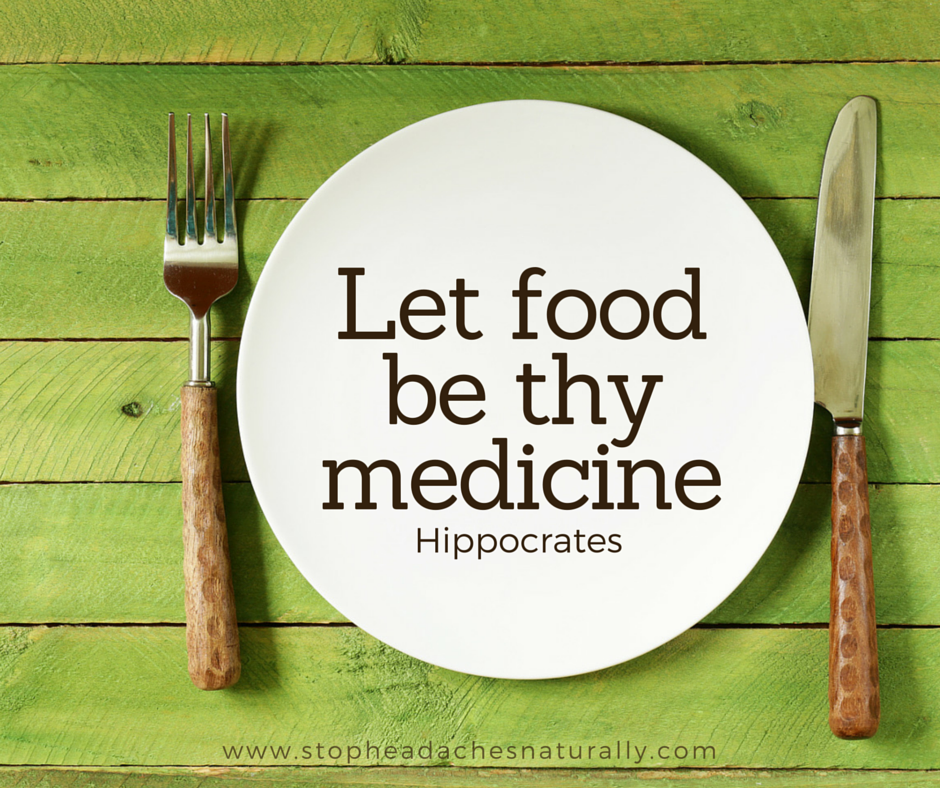
Hippocrates was a Greek physician who made such an impression on medical history that today he is called the father of modern medicine - some graduating medical students take the “Hippocratic Oath’ upon receiving their doctoral degree.
Even though Hippocrates did most of his work around 400 years before the birth of Christ, we can still learn a lot from his detailed observations of disease and its effects, and how health is often influenced by diet.
It’s a shame that many doctors prescribe medication without considering the benefits of a healthy diet.
The Focus Of Western Medicine Is On Treatment Rather Than Prevention
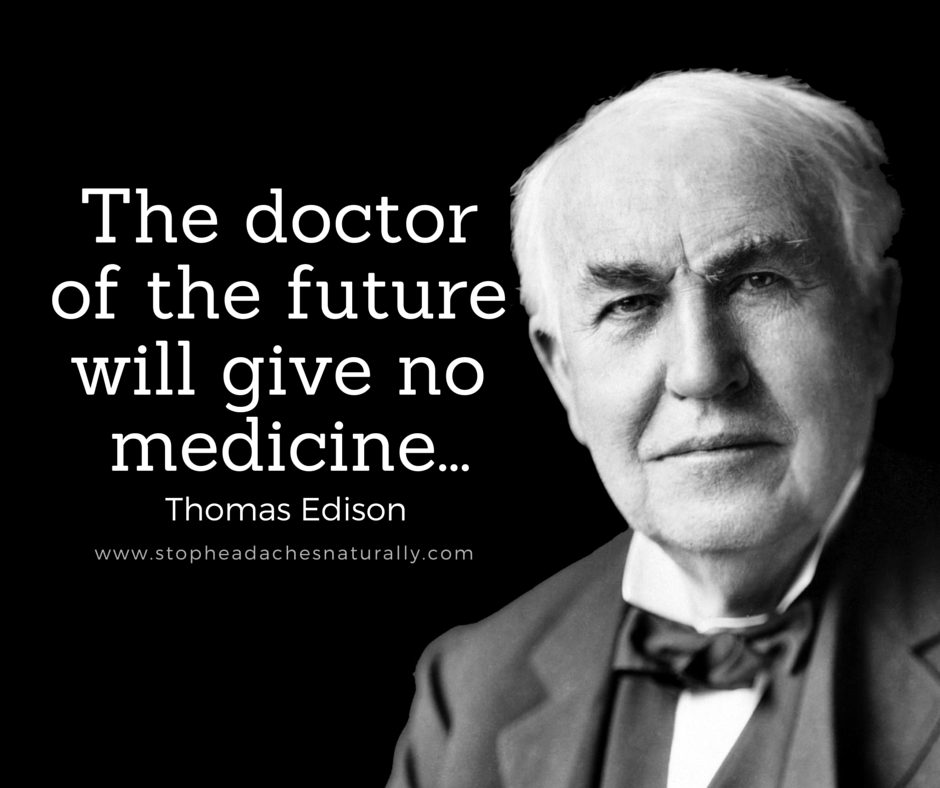
“The doctor of the future will give no medicine, but will interest his patients in the care of the human body, in diet, and in the cause and prevention of disease.”
Thomas Edison
Although there have been many medical advances since Edison’s time, the doctor is unfortunately still “giving medicine”.
The traditional approach in Western medicine has always been to diagnose a particular disease or condition from known symptoms and then to treat it with medication, surgery or various procedures.
This focus on diagnosis and treatment worked well for infectious diseases, but is not very useful for multi-factorial chronic diseases like cancer and cardiovascular disease.
At the population level, the emphasis has shifted in favour of understanding the underlying causes of disease, and prevention through improvements to lifestyle.
However this has not really been translated to the individual patient-doctor consultation.
It is not just the doctor’s fault – patient expectations also contribute to this situation. Patients sometimes complain they have not got value for money if they don’t leave clutching a prescription, but just discuss factors like diet, exercise and sleep with their doctor.
Or if the doctor does recommend various lifestyle changes, patients frequently ignore this advice and keep looking for “the magic bullet”.
And when the patient is in pain, many doctors feel helpless if they can’t provide some form of pain relief.
This is an excerpt from Stop Headaches Naturally Chapter 6.8 - The focus of Western medicine is on treatment rather than prevention
The Mind-Body Connection
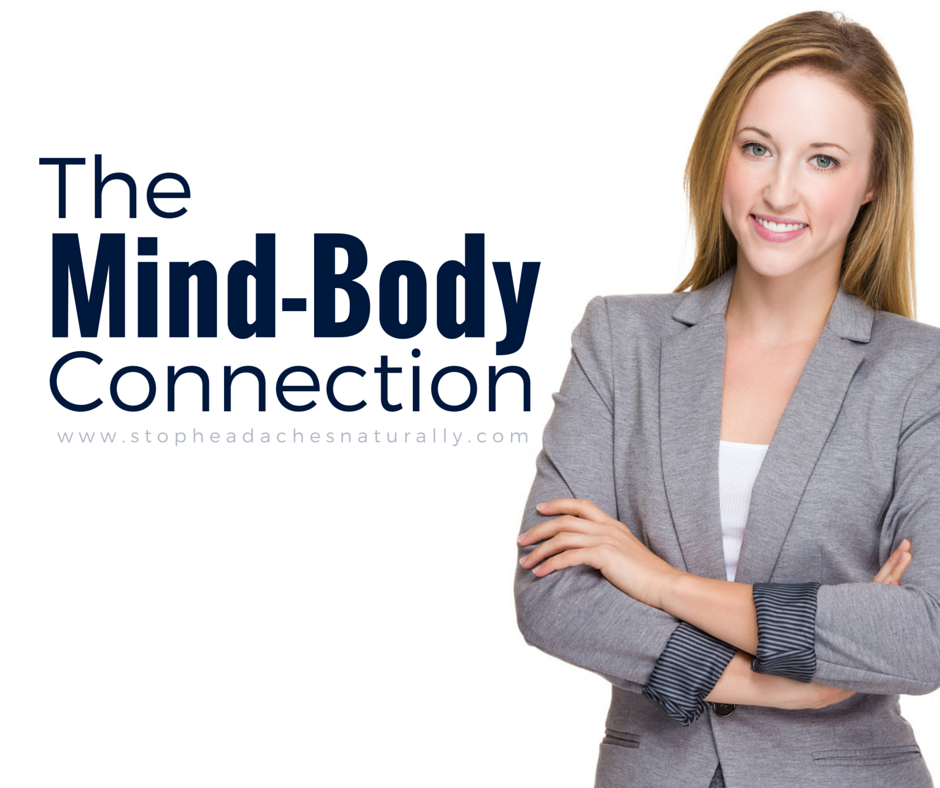
Your body position, posture, gestures and facial expressions can actually influence how you think, feel and even behave.
Read this interesting article from Berkley Wellness and find out more about the 4 Mood-Changing Poses:
1. Cross your arms to increase perseverance
2. Increase willpower by tensing your muscles
3. Smile to improve your mood
4. Assume a balanced position to be more levelheaded when shopping
N.B. cultural differences will influence the effect
Why Do Your Knuckles Crack?
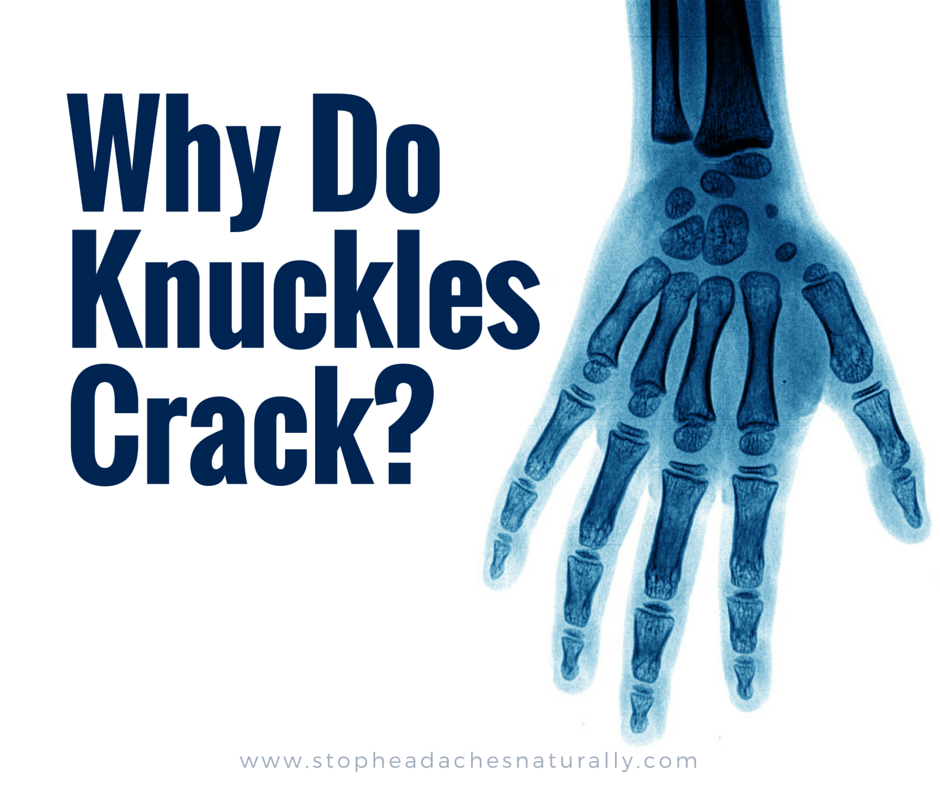
Are you concerned that cracking your knuckles leads to joint degeneration?
Or have you ever wondered why your neck cracks (pops) whenever you stretch it?
The answer can be found in the article published by the University of Alberta Faculty of Rehabilitation Medicine, PLOS One called, 'Pull My Finger Study'.
"A cavity is created and that event is what's associated with the sound"
With the aid of a MRI, a finger was slowly pulled until the knuckle cracked. It finally proved that when you stretch the capsule that surrounds a joint, a bubble forms in the synovial fluid which is responsible for the popping sound.
Check out the MRI study video:
Leader author Professor Greg Kawchuk explains. "It's a little bit like forming a vacuum. As the joint surfaces suddenly separate, there is no more fluid available to fill the increasing joint volume, so a cavity is created and that event is what's associated with the sound.
"No evidence that knuckle cracking leads to degenerative changes"
The data fails to support evidence that knuckle cracking leads to degenerative changes in the metacarpal phalangeal joints in old age. The chief morbid consequence of knuckle cracking would appear to be it's annoying effect on the observer."
Exercise - Is More Better?
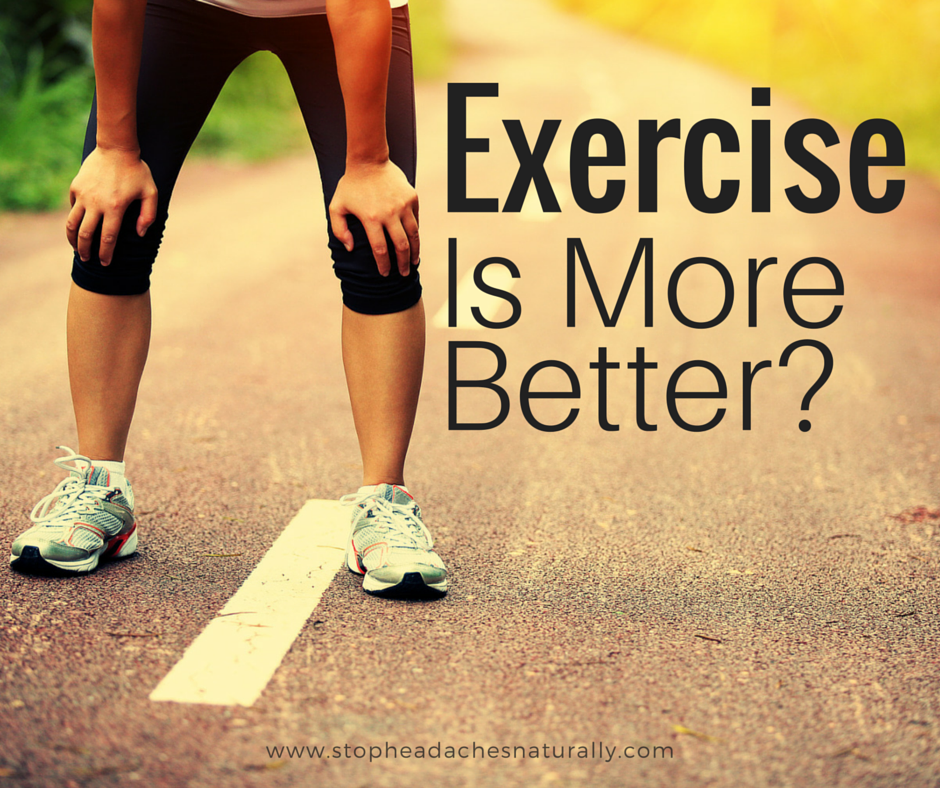
A new study published in Current Biology found that people who exercise a lot don’t burn extra calories for their efforts beyond a certain point.
Now that doesn’t mean you stop exercising but it does shed some light on the misconception that more is better.
Read this interesting WebMD Heath News article and find out:
- What did the study find?
- The role of exercise in weight loss
- Why is it that more exercise is not better?
- Do we hit a kind of plateau?
- How do you find your ’sweet spot’?
- What’s the best take-home advice from this research?
Is It Really A Sinus Headache?
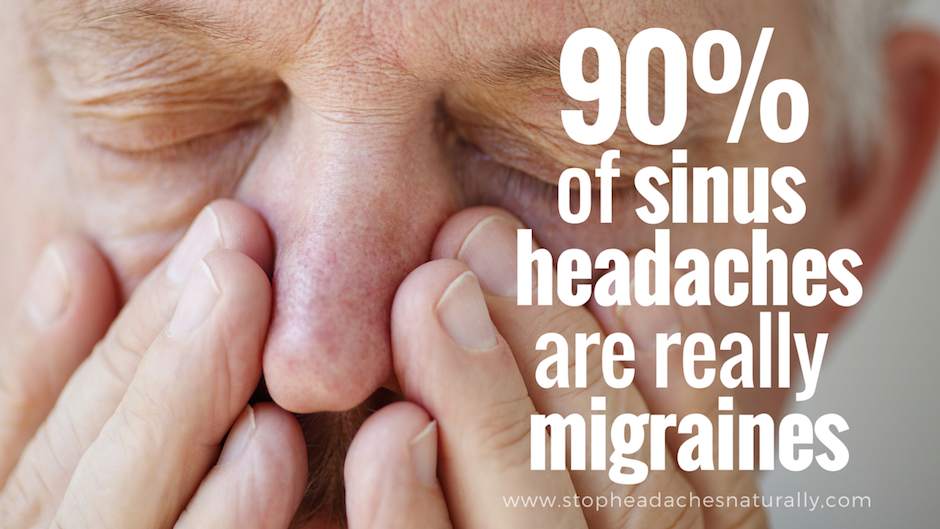
Maybe you think you have sinus headaches when what you really have are migraines... 90% of “sinus headaches” are migraines.
The reason for the confusion and misdiagnosis is that migraines share the same symptoms as a sinus headache - stuffy or running nose, sinus pressure, sinus pain and watering eyes.
Treating yourself with nasal decongestants (when you don’t have a sinus headache) is definitely not a good idea as it can lead to rebound (medication overuse) headaches.
Preventative Medicine - Drink Water... But How Much?
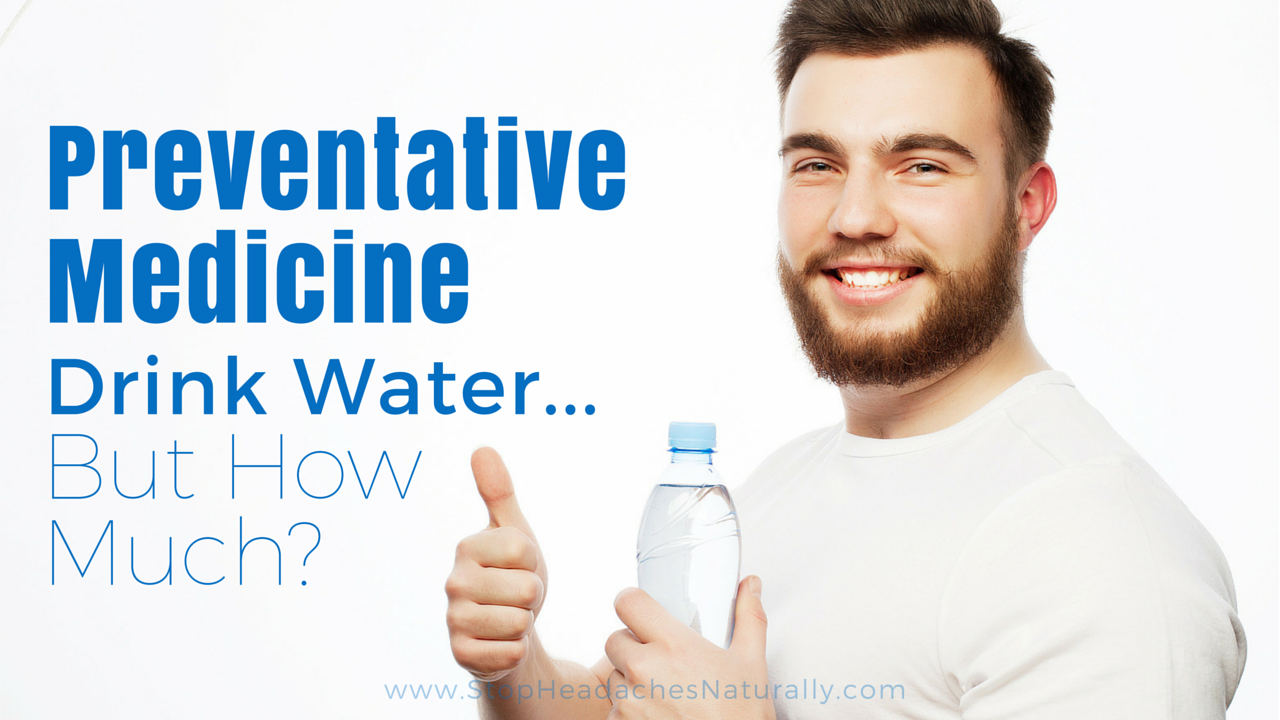
Studies on hydration status normally focus on water balance over a 24 hour period. For water balance to be maintained, water intake must equal water losses. So how much water or other fluids will be required for this?
It is difficult to make universal recommendations. People vary widely in their water needs depending on many different factors. These include age, gender, body size and composition, health, level of physical activity, and the temperature and humidity their environment. Even working in a dry air conditioned office can lead to increased water losses that we are not aware of.
"Conflicting points of view on how much fluid (including water) you should drink per day to stay well hydrated"
There are two conflicting points of view on how much fluid (including water) you should drink per day to stay well hydrated and government health agencies and other health authorities have changed their advice over the years.
One view is “to let thirst be your guide”. This is based on defining mild dehydration as starting at 3% loss of body weight. [1] It may work for who those sweat a lot, like athletes or those doing physical activity in hot climates. But it doesn’t seem to work so well for the average person going about their everyday activities, where water loss is smaller and more gradual.
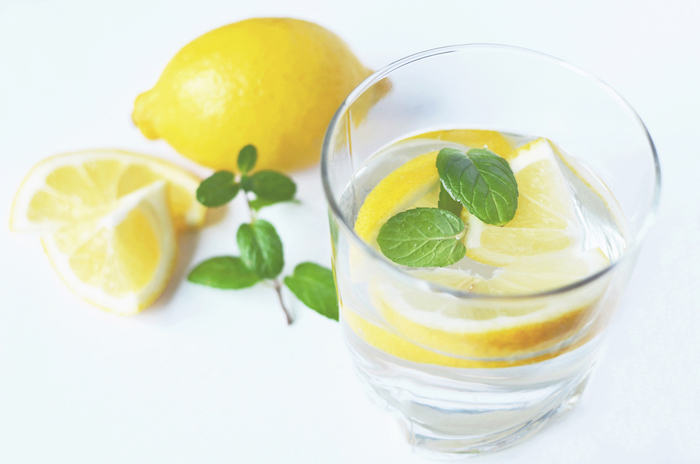
Part of the problem is that humans do not sense thirst until they have lost 1% to 2% of their body mass as water. [2] By that stage, you are already mildly dehydrated. Water has been transferred from within and between the cells of your body and into your blood-stream. In addition, some people get used to ignoring thirst signals. In others, such as the elderly, the thirst mechanism is less effective.
However the brain is 80% water. Recent research has shown that a loss of just 1.6% of body mass impaired cognitive performance and mood in healthy young men. [3] It seems reasonable to assume that a similar minor water loss can trigger a headache attack.
The alternative view on maintaining hydration status is to offer specific guidelines for an “average” non-exercising person in a temperate climate.
It is commonly assumed that about 20% of our water intake comes from food. [4] That leaves about 1700 ml to be made up by water and other beverages. It fits reasonably well with what in the US is referred to as the 8 x 8 rule – in other words drink a total of eight 8 oz glasses per day, which comes to a bit less than 2 litres.
"About 20% of our water intake comes from food. That leaves about 1.7 litres to be made up by water and other beverages"
However what is generally not emphasised by the need to spread fluid intake out evenly throughout the day. It takes time for water to be absorbed from the gut, enter the blood-stream and rehydrate the cells.
Drink too much too quickly and a lot of it will pass straight through. It can also be dangerous under some circumstances, especially when a lot of salts have been lost in sweat and these are not replaced at the same time.
What about drinks containing caffeine, like coffee, tea and some soft drinks, which have a mild diuretic effect?
Water balance studies show that these don’t cause dehydration over a 24 hour period, at least for those used to caffeine. However it is possible that increased urination could lead to temporary water losses from within brain cells and trigger a headache attack. If these losses are later made good they won’t be detected.
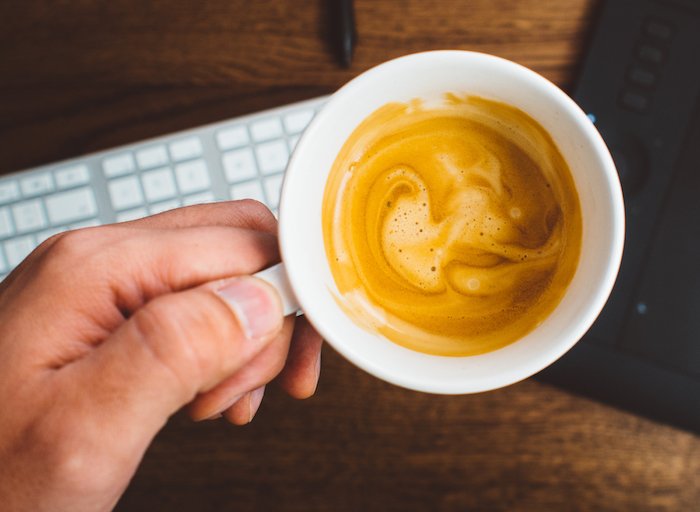
In any case headache sufferers need to be cautious about their caffeine intake to avoid headaches triggered by caffeine withdrawal.
Water is certainly a much better choice than sugary commercial fruit juices or soft drinks which can cause your blood glucose levels to spike. These drinks,[5] and even diet soft drinks, [6] have also been linked to progressively putting on body fat over time.
"We suggest you aim to drink roughly 1.5 litres of water evenly spread out over the whole day, and 20% derived from your diet, it will provide a total fluid intake of about 2 litres"
In the absence of any better evidence, we suggest you aim to drink roughly 1.5 litres of water evenly spread out over the whole day, giving a total fluid intake of about 2 litres.
Even if you don’t like water, this is an achievable target, provided you gradually replace some of your other beverages by water.
You could also try filtering tap water (this is a lot cheaper than bottled water) and adding a slice of lemon.
[1] H Valtin (2002). “Drink at least eight glasses of water a day.” Really? Is there scientific evidence for “8 x 8”?” Am J Physiol Regul Integr Comp Physiol, 283(5): R993 –R1004.
[2] LE Armstrong (2012). “Hydration Biomarkers During Daily Life: Recent Advances and Future Potential.” Nutrition Today, 47(4): Supplement 1: S3 - S6.
[3] MS Ganio, LE Armstrong, DJ Casa, BP McDermott, EC Lee, LM Yamamoto, S Marzano, RM Lopez, L Jimenez, L Le Bellego, E Chevillotte and HR Lieberman (2011). “Mild dehydration impairs cognitive performance and mood of men”. Br J Nutr, 106(10): 1535-1543.
[4] E Perrier, S Vergne, A Klein, M Poupin, P Rondeau, L Le Bellego, LE Armstrong, F Lang, J Stookey and I Tack (2013). “Hydration biomarkers in free-living adults with different levels of habitual fluid consumption”. Br J Nutr; 109(9): 1678–1687.
[5] VS Malik, A Pan, WC Willett and FB Hu (2013). “Sugar-sweetened beverages and weight gain in children and adults: a systematic review and meta-analysis”. Am J Clin Nutr; 98(4): 1084-1092.
[6] ML Power and J Schulkin (2013). The Evolution of Obesity, p117-118, JHU Press.
Preventative Medicine... Diaphragmatic Breathing
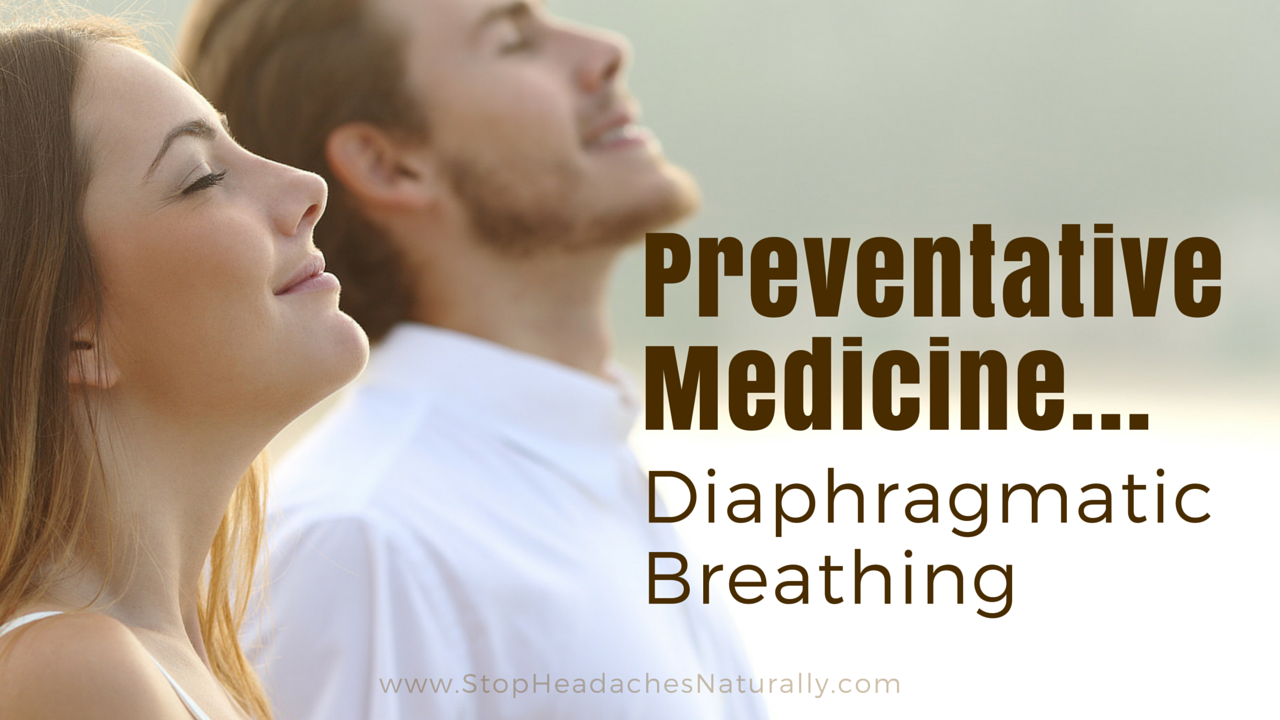
If you are like most people you probably haven’t given much thought to the way you breathe until now.
However, factors such as stress, slumping in the chair, abdominal surgery, or even always keeping the stomach tensed and hence fashionably flat, mean we tend to adopt incorrect breathing patterns without realising it. Perhaps it may come as a relief to know those much sought after “washboard abs” are not so healthy after all.
Common examples of incorrect breathing include:
● Chest breathing (breathing high into your chest)
● Shallow breathing
● Irregular breathing
● Failing to breathe out fully
● Forgetting to breathe out at all for a while and holding your breath
● Breathing too rapidly or too deeply (hyperventilation)
● Breathing through your mouth rather than your nose
Some people who breathe incorrectly complain they tend to run out of breath while talking, others may notice feeling anxious, but many may not be aware of any effects at all.
"We often worry about what to eat and what not to eat but we can last months without food, but only days without water and only minutes without oxygen"
However correct breathing is essential for optimal physical and emotional well-being. Consider that we often worry about what to eat and what not to eat but we can last months without food, but only days without water and only minutes without oxygen.
Incorrect breathing patterns can have some surprising effects.
In Chapter 7 we mentioned that habitual chest breathing could cause trigger points to develop in the neck and shoulder muscles, and that replacing chest breathing by diaphragmatic breathing plays an important part in preventing these trigger points from recurring in the future.
But what is diaphragmatic breathing?
Diaphragmatic breathing, which is also called abdominal or belly breathing, is considered to be the normal healthy way to breathe. It means drawing air deeply into the lungs while keeping the belly relaxed and using the diaphragm to do most of the work. This causes the abdomen to expand rather than the chest.
Slow diaphragmatic breathing is how a sleeping baby breathes, its abdomen rising and falling with each breath.
It is the most efficient way to breathe, requiring the least physical effort and almost completely filling the lungs with air.
"It also has a calming effect, helping reduce emotional stress and excess muscle tension"
It also has a calming effect, helping reduce emotional stress and excess muscle tension and so is normally used as a prelude to relaxation exercises.
Slow diaphragmatic breathing can make a significant contribution to reducing the frequency and severity of your headache attacks.
It does this by:
● Removing one cause of trigger points in the muscles of the neck and shoulder muscles which are a direct source of headache pain.
● Increasing oxygen supply to the brain.
● Reducing emotional stress and excess muscle tension.
* This is an excerpt from the book Stop Headaches Naturally (Chapter 8, Correct Breathing - Diaphragmatic Breathing & Headache Prevention)
What Is Prentative Medicine?

Have you ever tried fixing a leaky roof when it’s raining? The only thing you can do is place a bucket under the leak and temporarily repair the leak.
Once the rain stops, it’s easy to remove the water from the bucket and hope it doesn’t rain again. But if this cycle continues, the leak that was once only a single drop in a bucket, can worsen to the point were the roof can buckle and cave in.
Many of us can apply this behaviour to our health. It’s important that once we experience a ‘leak’ in our health - whether its back pain, tension headache or migraine - make the time to fix it.
"Once we experience a ‘leak’ in our health - whether its back pain, tension headache or migraine - make the time to fix it"
So don’t wait until it rains again. If the sun is shining and there are blue skies, make sure you make the time to take preventative measures to ensure that your roof contains no cracks or faulty plumbing.
Stay posted! I will be providing some Preventative Medicine strategies in upcoming posts…
Painkilllers Just Mask The Pain
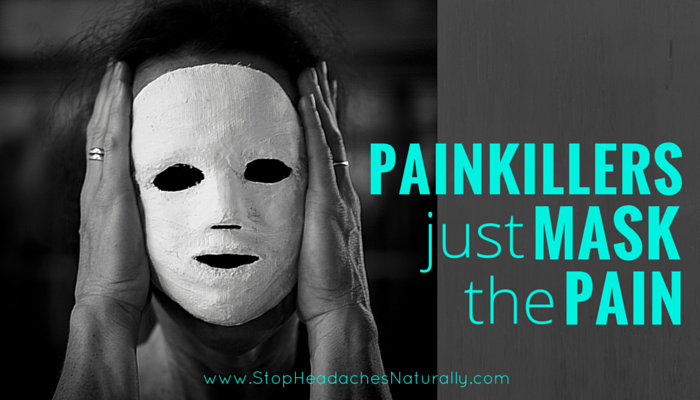
Frequent headaches can really reduce your quality of life but pain-killers are not the answer
Pain of any sort isn't any fun, but headache pain can stop you thinking clearly. Even a relatively mild headache makes it more difficult to do your work properly and just getting through your daily routine starts to become an effort.
But a severe headache can stop you dead in your tracks and render you unable to function normally. And if the pain is accompanied by typical migraine symptoms of nausea and vomiting then probably all you will be able to manage to do is to go home and collapse into bed.
"It is tempting just to reach for a pain-killer to numb the pain"
What makes it harder is that you often don’t get much sympathy or understanding from those around you, unless they are also badly affected by headaches. Because headaches are extremely common they may be seen as “normal” and not a “proper illness”.
Even our language tends to trivialize headache pain as in the expression “a real headache” for some annoying or difficult problem.
"A headache may be seen as an excuse to avoid responsibility or something you don’t feel like doing"
And a headache may be seen as an excuse to avoid responsibility or something you don’t feel like doing, as in the well-worn cliché “Not tonight dear, I have a headache” for avoiding sex in a relationship.
If you suffer lots of headaches, and particularly if they are severe, it is easy to feel helpless not knowing when a headache will strike again or how to stop it from returning. Headaches can appear in the day or the dead of night.
One time, a headache might hit during a stressful crunch to meet deadlines at work, another may occur in the middle of an uneventful day, and yet another during a pleasurable activity.
The cause of your headaches can look like a complete mystery.
"Makes you an easy target for shrewd marketing campaigns by the pharmaceutical industry with their TV commercials promising “a quick fix” for your headache pain"
All of this makes you an easy target for shrewd marketing campaigns by the pharmaceutical industry with their TV commercials promising “a quick fix” for your headache pain.
It is tempting just to reach for a pain-killer to numb the pain.
While this is understandable and OK every now and then, it is most definitely not a good idea on a long term basis for the following reasons:
- You are only masking the symptoms, not treating the underlying factors that are provoking your headache. Only by understanding and correcting these factors can you can ever hope to be free of headache pain.
- You are actually likely to make your headaches much worse. Instead of occurring perhaps several times a month, they now occur much more frequently, often daily, and the pain is more severe and longer-lasting. This is known as rebound headache or medication overuse headache.
- All medications have side effects. Serious side effects of long-term use of headache painkillers include damage to the gastrointestinal tract, liver and kidneys.
- By relying on a pill, you perpetuate your feeling of helplessness. It seems like headaches are controlling your life and there is nothing you can do about it. If you unravel the factors that are provoking your headaches, you will restore your feeling of being in control of your life, and this may go some of the way towards actually alleviating your headaches.
There are genuine natural alternatives to pain-killers
It is easy to find detailed information about headache medications on the internet. However information about natural therapies for headache is normally presented in a scatter gun fashion in the form of a list of things to try.
That is why we wrote the book Stop Headaches Naturally - Treat The Cause Not Symptoms. The main aim of this book is to provide you with comprehensive, reliable information about the different types of natural therapies which are available for headaches. We have also tried for to organise this information in a way which makes it easier for you to access and apply.
Photo credit: wolfgangfoto / Foter.com / CC BY-ND
Why Does Stress Plus Muscle Tension Equal Headache?
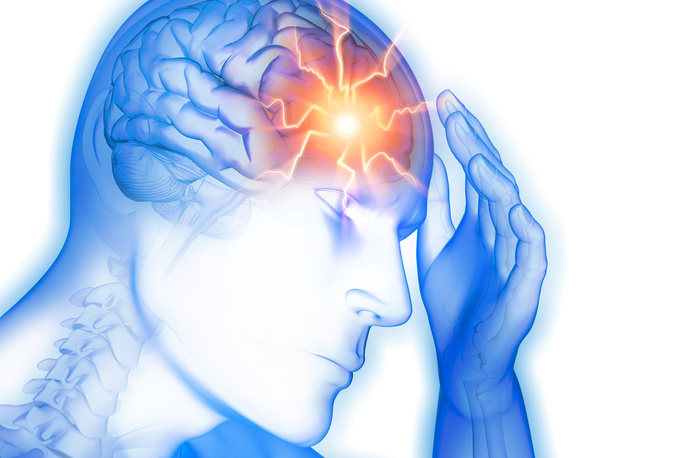
Both migraine and tension headache sufferers list emotional stress, and feelings such as anxiety, worry, fear, anger, and frustration that accompany it, as their most important trigger. But emotional stress is more than a trigger. It is part of the mechanism that produces a headache.
Emotional stress can contribute to headaches by:
- Interfering with natural pain suppression mechanisms
- Increasing the excitability of the brain
- Altering bloodflow to and within the brain
- Causing the release of histamine, a vasodilator and inflammatory substance
- Increasing musculoskeletal pain
On-going stress can lower your headache threshold, making it more likely that exposure to your other triggers will provoke a headache attack. Specific short term stressful episodes may trigger a headache attack. [12]
The role of emotional stress in provoking headaches is reasonably well appreciated. However few headache sufferers are aware that the sustained and excessive amounts of muscle tension may play an equally important role.
Nor are they usually aware of just how tight the muscles in their jaw, neck and shoulders actually are for most of the time. Sustained tension in these muscles is a common response to emotional stress.
It is also the result of maintaining the upper part of your body in a fixed posture. Sitting without moving for lengthy periods of time is a major culprit. Sitting with your neck craned forwards magnifies the problem. This “forward head posture” [13] will also cause pain in the joints of your neck.
Tight or tense muscles are muscles that are actively contracting. However, as we have seen, when muscles stay contracted for too long without relaxing they start to suffer microscopic tissue damage. Various inflammatory substances are released into the muscle fluid from where they are transported into the blood stream.
"when muscles stay contracted for too long without relaxing
they start to suffer microscopic tissue damage"
Hence on-going tension in neck, jaw and shoulders acts as a continual low level source of pain which can reduce your headache threshold. If trigger points are present, tension may irritate them sufficiently to provoke a headache attack.
Muscle tension, like emotional stress, lowers your headache threshold, making a headache attack more likely. Muscle tension can also act as a headache trigger.
[12] JM. Nash and RW Thebarge (2006). “Understanding Psychological Stress, Its Biological Processes, and Impact on Primary Headache.” Headache 46(9):1377- 1386.
[13] DG Borenstein, SW Wiesel and SD Boden (2004). Low back and neck pain: comprehensive diagnosis and management, p231-233, Edition 3, Elsevier.
Don’t Let Your Thirst Dictate Your Water Intake

Dehydration may seem a mild problem but even at a moderate level it can cause a lot of distress to an otherwise healthy person - if the problem is severe, it can even become life threatening. Our body is about 70% water and any decrease in this level can lead to many uncomfortable ailments including headache and migraines. So if you suffer from such complaints, it is important to keep your body well hydrated.
What is dehydration?
Dehydration is basically a deficiency of water in our body. In order for our body to function optimally, the balance between electrolytes and water needs to remain normal. When this balance is disrupted, we suffer from a number of physical symptoms that are collectively known as dehydration.
Common symptoms of dehydration
Following are a few of the most striking symptoms of dehydration:
• Headache
• Excessive thirst
• Dryness of mouth
• Dry, wrinkled skin with decreased elasticity
• Fatigue and weakness
• Muscle pain
Relation between dehydration and headache
The reason behind this is not clear but some studies have shown that it is due to the constricted blood vessels in the head that are trying to regulate the fluid levels and conserve water. This creates a deficiency of blood supply and therefore oxygen to the brain, creating a headache.
Dehydration can cause headaches and even trigger a migraine attack. The amount of pain may vary from person to person. It can be felt either in the front or back of the head or only on one side. There are some people who feel it throughout the entire head, mimicking a tension headache. A common symptom of a dehydration headache is increased pain with any head movement or walking.
Treating a dehydration headache
In order to treat a dehydration headache, you simply have to drink some water to rehydrate your body. It is best not to drink too fast. Instead, slowly drink 2-4 glasses of water and your headache will subside within a couple of hours. In some cases when you are unable to consume food or if a child is dehydrated, drink fluids that contain electrolytes such as a sports drink.
It is also important to rehydrate without sweating otherwise you will continue to lose fluids. So move to a cool environment or find some shade.
If the problem persists, it is best to consult a doctor who will prescribe I.V. fluids for faster recovery from dehydration.
Preventative measures
Drinking enough water throughout the day is the best way to prevent dehydration headaches. Although 6 - 8 glasses of water (1.5 - 2 litres) is considered ideal, this will vary according to your weight, physical activity and whether you live in a warmer climate or higher altitude.
Many people fall in the trap of never drinking enough water because they never feel thirsty - don’t let your thirst dictate your water intake. It is recommended to drink enough water so your urine is clear and a pale yellow colour.
Refrain from alcohol and excessive caffeine, because they act as a diuretic – leading to dehydration. Fruits and vegetables are great for health and energy but they are not a substitute for drinking water.
Image: spongysponge
________________________
Pablo Tymoszuk is a soft tissue therapist specialising in remedial, myofascial and dry needling techniques. He also acts as an ergonomic specialist and wellness consultant which has motivated him to co-author the eBook Stop Headaches Naturally.
Together with Dr Margaret Scarlett they present a range of strategies for stopping headaches and migraines without drugs. All strategies are organized in a systematic manner and backed up by references to the scientific literature.
How To Be A Smart Smartphone User

If you use a smartphone or tablet for more than one hour everyday, you definitely need to learn how to use it more intelligently… and no, i am not referring to another new app that will help you streamline your workflow.
The exponential growth in mobile technology has made it possible for people from all walks of life, young and old to own a mobile device. People not only using mobile devices for texting or phone calls but to read emails and eBooks, interact within social-media circles, play games and watch videos. This forces them to hold their necks in a bent position for long periods, creating excessive strain on the ligaments, tendons and muscles of the cervical vertebrae.
Unfortunately many of us ignore the aches and pains that occur while using our mobile devices, but it is only a matter of time before we begin to experience more serious problems like:
• Tension headaches
• Blurred vision
• TMJ syndrome (jaw pain)
• Joint pain
• Muscular tension and stiffness in the neck, shoulders and back
• Tingling down the arm and fingers
What is the real cause behind the neck pain
Your neck is at its most relaxed and comfortable state when the weight of your head is positioned directly on top of your spine. The muscles around the front, back and side of your neck should be working together to hold your head in a neutral position – looking straight ahead - this is the most natural state or position of the neck. So when you use a mobile device for prolonged periods with a bent and rotated neck, this will create an unnatural position, which leads to overuse injuries.
Of course, bending and turning your neck in various directions is encouraged because the cervical vertebrae are designed to facilitate free movement in all directions. However, you must be aware of your posture and make sure that your neck does not remain in awkward positions for long periods and returns to the neutral position.
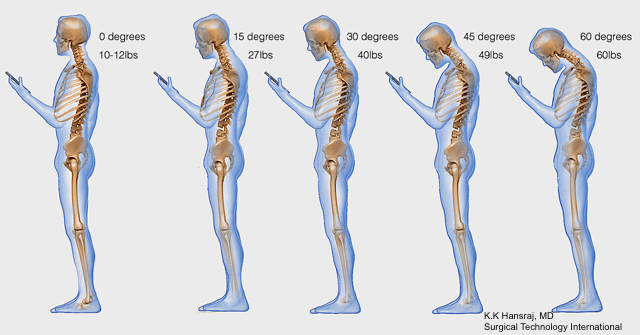
On average, people use mobile devices for two to four hours a day. In other words, our necks are bent and held in a forward head position for 700 to 1,400 hours every year. It is the cumulative effect of years of overuse and stress that leads to degeneration and serious neck and back problems.
How to minimize the damage
Dr. Ezriel Kornel, a neurosurgeon from New York has offered some suggestions for computer and mobile users to reduce the damage caused by poor posture:
• Keep your phone or tablet at a higher level so you are not continually bending your head forward
• The Alexander technique is beneficial as it helps you become aware of how you use your body and teaches you optimal body positioning and poise
• If you suffer from neck pain or headaches, use mobiles phones in moderation to help reduce excessive strain on the neck
• Take frequent breaks. Stretch your neck and reposition your body to relieve the accumulated tension (using an app to remind you can be very useful)
Whether you like it or not, using a mobile device has become a part of our daily lives and it is here it to stay. So it is important that you are aware of the negative effects of prolonged mobile use, especially with your neck bent forwards. Not only will it improve your posture but it will also decrease your stress levels, reduce muscular aches and pains and be one the keys to stopping your headache and migraine pain… you will have become a smart smartphone user.
________________________
Pablo Tymoszuk is a soft tissue therapist specialising in remedial, myofascial and dry needling techniques. He also acts as an ergonomic specialist and wellness consultant which has motivated him to co-author the eBook Stop Headaches Naturally.
Together with Dr Margaret Scarlett they present a range of strategies for stopping headaches and migraines without drugs. All strategies are organized in a systematic manner and backed up by references to the scientific literature.
Laughter Better Than Medicine And Affects The Body Like Exercise
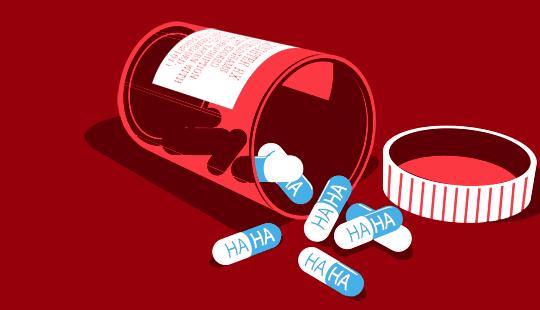
After a real belly laugh and wiping the tears from my eyes, there is no doubt to me that my mind and body are better for it... even though my ribs hurt, it's as if a weight has been lifted off my shoulders.
I have always believed that laughter is as good as medicine. So when I came across this article by dailyhealthpost.com regarding 'mirthful laughter' [*] and it's health benefits, I was interested. I trust that you find it as interesting as I did.
[*] Mirthful: full of or showing high-spirited merriment
Enjoy the read...
We are rife with involuntary reactions. We know why we sneeze. We know why we cough. We know why we blink our eyes. But we don't really know why we laugh.
Sense of humour is personal but everyone has one. We weren't built with extraneous physiological processes, everything our bodies do has a purpose. So while we may not know why we laugh, we now know that doing so contributes to physical and emotional health.
In the 1970s, Norman Cousins, editor of the Saturday Review, published his story of laughter as medicine in The New England Journal of Medicine. He subsequently published books on the subject of mind-body healing: Anatomy of an Illness, Head First, and Mind Over Illness. In these, he explores his experience of having been diagnosed with life-threatening heart disease in 1964 for which he had self-treated with massive doses of vitamin C and laughter. [1] (Cousins died in 1990). His story spurred scientific research into the psychology of laughter - gelotology. Many studies have now shown that laughter does, in fact , promote wellness.
The results are complex and fascinating.
Laughter appears to occur more frequently and has a greater physical impact when it occurs in a group setting. laughing alone is good but laughing with others is even better. The physical act of laughing causes the release of endorphins-neurotransmitters that moderate pain and stress with an opiate effect.
In a controlled study, pain threshold was significantly higher after laughter than without. [2] Even anticipation of the prospect of "mirthful laughter" reduces stress hormone levels and increases endorphins and human growth hormone (which contributes to optimizing immunity).
A study of high-risk diabetics found that:
“the addition of an adjunct therapeutic mirthful laughter Rx (a potential modulator of positive mood state) to standard diabetes care may lower stress and inflammatory response and increase 'good' cholesterol levels. The authors conclude that mirthful laughter may thus lower the risk of cardiovascular disease associated with diabetes mellitus and metabolic syndrome.” [3]
The benefits of laughter don't stop there.
The physical act of laughter - not just a chuckle, but real, belly-type laughter - is exercise. If you've ever had one of those episodes (and we certainly hope that you have) in which you laugh so hard that you cry and can't breathe, you know that you could be a little sore afterward. Without thinking, the act of laughing promotes various physical activities:
1. Laughter dilates blood vessels, improving circulation, and exercises abdominal, facial and other muscle groups.
2. The release of growth hormones and dopamine in the brain bring a sense of euphoria and happiness - a high that improves not only mood but supports immune function.
3. With the release of hormones and neurotransmitters during and following a bout of laughter, blood sugar and cholesterol levels are reduced. These effects can last for days, especially if laughter is a regular part of your life.
4. With the highs comes the lows - in a good way: improved blood flow and body nourishment, the reduction of stress and pain, and emotional contentment are followed by greater relaxation and better sleep quality.
Science was loth to investigate the phenomenon of laughter until fairly recently. Unlike other involuntary response, it seemed... click here to read the rest of this article.
Source [1] [2] [3]
Pablo Tymoszuk is a soft tissue therapist specialising in remedial, myofascial and dry needling techniques. He also acts as an ergonomic specialist and wellness consultant which has motivated him to co-author the eBook Stop Headaches Naturally.
Together with Dr Margaret Scarlett they present a range of strategies for stopping headaches and migraines without drugs. All strategies are organized in a systematic manner and backed up by references to the scientific literature.
You’ve Been Drinking Coffee at the Wrong Time and Here’s Why
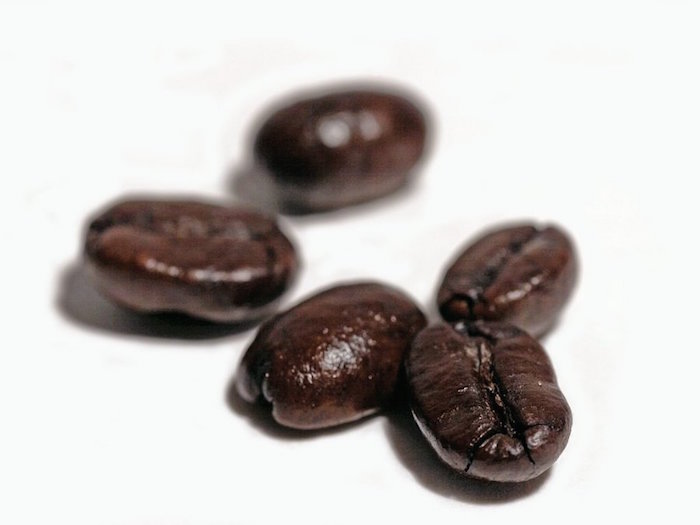
Life is too short for bad coffee and I have to admit that I have become a coffee snob. So when I enjoy my daily espresso (hard core, I know), it certainly needs to be good!
Even though coffee has numerous health benefits, it is important to limit its intake, especially if you suffer with headache and migraine pain. For that reason the following article by Daily Health Post [1] caught my attention... when is the best time of the day to enjoy my perfectly roasted and freshly ground coffee bean from Costa Rica... that has a sweet cherry aroma and leaves a creamy mouth feel with a crisp red apple finish?
Enjoy the read...
Americans LOVE their coffee (I would say Australians LOVE their coffee as much, if not more than Americans). It's estimated that eighty percent of all adults drink caffeine on a daily basis and of those, over half are taking it in coffee.
Coffee has been studied probably more than other beverage in recent years and the majority of conclusions are positive. Decidedly so.
A healthy stimulant
Coffee improves memory, combats diabetes, contains antioxidants, and of course, increases our energy. Most people don't realize that coffee reduces the risk of liver, oral, and skin cancers, and neurodegenerative disease:
"The findings of the previous studies are somewhat inconsistent, but most studies (3 out of 5) support coffee's favorable effects against cognitive decline, dementia or AD. In addition, two studies had combined coffee and tea drinking and indicated some positive effects on cognitive functioning. For tea drinking, protective effects against cognitive decline/dementia are still less evident. In the CAIDE (current) study, coffee drinking of 3-5 cups per day at midlife was associated with a decreased risk of dementia/AD by about 65% at late-life." [2]
People drink coffee because it tastes good and provides a legal buzz that makes the morning zip by.
Get the most zip from your cuppa

If you want to get the most of your (first) morning coffee, you may want to wait a little bit before you drink it. When you wake up, a hormone called cortisol - the 'stress hormone' - that's created by the adrenal glands kicks into gear to get all your systems functioning. You naturally get an energy boost.
By drinking caffeine first thing, you feed your energy level when it's already revving up. If you wait ninety minutes to a couple of hours after you get up, your timing will be jibe with your body's natural energy flow and turn it up just as it starts to flag.
If you wake up at 7:00, let's say, waiting at least 8:30 before you drink any caffeinated beverage will get the most out of ot, energy wise. Caffeine works by blocking energy regulators called adenosine that tell your body you're becoming fatigued.
Adenosine builds up during the day as you expend energy until melatonin is released as it gets dark outside to tell your body it's getting time to wind down and go to sleep. By blocking adeosine, your brain doesn't feel tired. Zippa-dee-doo-dah!
There's a time for everything
The best time for caffeine is then mid-morning, between when you awaken and when you eat lunch to keep energy levels even. If you drink an afternoon cup, too, the same reasoning holds: about half-way between lunch and dinner. Watch that second cup, however: studies have shown that drinking coffee less than 6 hours before bed can interfere with your sleep.
Given our love of caffeine, there are some downsides to drinking it regularly: it can affect our sleep, is addictive, can cause headaches and affect moods.
It’s all about moderation.
sources:[1] [2]
Pablo Tymoszuk is a soft tissue therapist specialising in remedial, myofascial and dry needling techniques. He also acts as an ergonomic specialist and wellness consultant which has motivated him to co-author the eBook Stop Headaches Naturally.
Together with Dr Margaret Scarlett they present a range of strategies for stopping headaches and migraines without drugs. All strategies are organized in a systematic manner and backed up by references to the scientific literature.
Can You Exercise For Just 60 Seconds A Week & Transform Your Health?

There are many people who don't exercise because they believe they need to run or cycle hundreds of kilometres, bench press the weight of a car or have a personal trainer that pushes them to new levels to achieve their fitness goals... but that is not true!
Let me make myself clear, I support the personal training industry but not everyone responds to that sort of training.
I have always questioned excessive exercise due to the negative effects it has on the body. Yes, if you want to be on the front cover of Men's Health Magazine with 10% body fat or compete in next years Tour De France, your body will have to undergo serious training to achieve such feats.
On the other hand if your goal is to control your weight, increase your health and decrease the chances of illness or disease, then do you really need to train 4-6 days of week? All you need is a simple fitness program that develops your strength, flexibility and endurance.
High Intensity Training (HIT) has been used for many years. It is a great way to achieve your fitness goals without excessive exercise, reduce the incidence of overuse injuries and allow you to live a balanced life without the stress of meeting unrealistic fitness goals.
Here is an excerpt from Dr. Michael Mosley's (author of 2:5 Diet) Daily Mail article that explains the importance of exercise and the benefits of High Intensity Training...
"Everyone agrees that getting more active will add years to your life (around 2.2 years, to be exact).
But, more importantly, it will significantly reduce your risk of developing a range of chronic diseases, from cancer to heart failure, dementia to diabetes.
Exercise will also help you sleep better, improve your mood and even perk up your sex life, according to the well-regarded Mayo clinic in the U.S. (even help reduce tension headaches).
But how much should you do? In 2008, a committee of U.S. scientists recommended 150 minutes of moderate exercise a week, while cautioning the necessary amounts 'cannot yet be identified with a high degree of precision'. 'In trials, most people say they prefer HIT to conventional exercise, not least because it is over so quickly'
This 150 minutes a week remains the recommended level despite the fact that less than 20 per cent of us do anything like that. The most common excuse is a lack of time. That has certainly been mine - which is why the idea of HIT appeals to me."
Keep reading this interesting article by Dr. Michael Mosley and you will also find out about:
- Roger Bannister Was A 'Fast' Exerciser
- You'll Want To Eat Fewer Calories
- Even Two 20-Seconds Bursts Help
- Your Muscles Will Be More Powerful
- Could It Be Dangerous
Photo: Bahrain Personal Training
Pablo Tymoszuk is a soft tissue therapist specialising in remedial, myofascial and dry needling techniques. He also acts as an ergonomic specialist and wellness consultant which has motivated him to co-author the eBook Stop Headaches Naturally.
Together with Dr Margaret Scarlett they present a range of strategies for stopping headaches and migraines without drugs. All strategies are organized in a syst
Smartphones Are A Hazard For Posture

Our smartphone obsession is putting Australians at risk of becoming a nation of hunch-backs, experts fear.
Chiropractors and physiotherapists are reporting a marked increase in the number of patients being treated for neck and shoulder complaints due to smartphone use.
Arthritis and Osteoporosis Victoria forecasts cases of arthritis and other musculoskeletal conditions will almost double to 8.7 million Australians within 20 years, with health costs estimated to be around $4.8 billion a year.
Australian Chiropractor Association spokesman Dr Michael Black said patients were experiencing headaches, upper back pain, sprains and muscle spasms. “While many people are tablets it appears that their ‘normal’ postural positioning has transformed people to developing rounded shoulders and subsequent forward head carriage leading to upper neck and upper back pain, resulting,” in headaches or migraines.”
Herald Sun | Richard Noone
Are suffering with headaches, back pain and spasms?
Do you need some help improving your posture?
Then have a look at just a few sections of Chapter 8 in the book Stop Headaches Naturally
IMPROVE POSTURE
- 8.2 What does having good spinal posture mean?
- 8.4 The wall test to assess and improve spinal posture
- 8.6 Modern work and leisure sets us up for bad posture
- 8.7 Mobile electronic devices and forward head posture
- 8.9 Set up your computer to minimize postural stress
CORRECT BREATHING
- 8.18 Diaphragmatic breathing & headache prevention
- 8.19 Learn how to breathe using your diaphragm
RETRAIN CORE MUSCLES
- 8.20 Spinal posture and the core postural muscles
DO SPECIFIC EXERCISES
- 8.21 Why exercises are important for headache prevention
- 8.23 Two part exercise for correcting forward head posture
Pablo Tymoszuk is a soft tissue therapist specialising in remedial, myofascial and dry needling techniques. He also acts as an ergonomic specialist and wellness consultant which has motivated him to co-author the eBook Stop Headaches Naturally.
Together with Dr Margaret Scarlett they present a range of strategies for stopping headaches and migraines without drugs. All strategies are organized in a sy
Anger Is A Health Hazard

Anger is a conundrum of complexities that affect each and every person differently. Are you a road-rager? A passive aggressive? Short fused?
Anger is a normal human emotion that is rarely a pretty one; it can be downright embarrassing, dangerous, with significant negative affects on the human body.
There is a flipside to negative anger, when managed well it can be: a healthy release, a motivator for change or a self-empowering tool.
The spectrum of anger ranges from mild frustration and annoyance to out of control rage; affecting your emotional, physical and cerebral state. The part of the brain that responds first when anger strikes is the amygdala. You can find it located deep within the temporal lobe of the brain.
The amygdala controls emotion and the instinctive ‘fight or flight’ response to fear, feeling threatened and stress. It is able to process a magnitude of information, assessing the possible dangers within milliseconds; allowing you to react first and think later.
Above the amygdala within the frontal lobe lies the ability to make decisions, solve problems and behavior. When anger hits, blood rushes through the frontal cortex clouding rational thought; depending on the person, this flash reaction can be either helpful or harmful. The old adage of ‘count to ten before reacting’ comes in handy here.
The domino effect of anger continues with the adrenal glands saturating the system with the stress hormones adrenaline and cortisol, giving you a burst of energy and added strength. This redirects blood flowing to the stomach and intestines to the muscles instead, in preparation to fight. Your blood pressure, pain threshold and temperature raise, breathing and heart rate increase, the pupils begin to dilate.
All the above happens each time anger or frustration get the best of you. How many times a day do you yell at the person who cut you off or the automated service that will not redirect you or your significant other? Anger not only affects the people around you, it is also is directly linked to your cardiovascular health and mental well-being.
According to Heart MD, “Higher levels of fatty acids and blood sugar are released to provide immediate energy to survive the perceived emergency.” The problem with the continued release of these fatty acids is overtime they start to build up in the arteries, setting you on a path towards heart disease. If you are someone who is constantly battling with anger, you are putting your health at a much higher risk for coronary heart disease or heart attack.
If you are an angeraholic, another issue you need to consider is the direct result of daily anger damaging the brain. Researchers have found that a continued supply of ‘trigger and effect anger’ may confuse the hippocampus (stress responder in the brain) and result in the inability to suppress your anger response all together.
There have also been studies showing anger in the brain disrupts the growth of new neurons, essential to sending messages and communicating with the rest of the body.
Some known health problems associated with anger include:
• Depression
• Anxiety
• Sleeplessness
• High Blood Pressure
• Risk of Coronary Disease
• Skin problems like increased acne
• Headaches or Migraines
• Digestive irregularities
Anger Management Tips
If you are a hothead who cares about your health, who cares about prolonging your future, anger management is right up your alley. Keep in mind that adopting and replacing a bad habit with a new one takes practice and doesn’t practice make perfect?
Try these anger management tips suggested by the Mayo Clinic:
• Think before you speak
• Let your mind clear before expressing your thoughts so you can think clearly
• Exercise to work off the frustration
• Walk away and Take a Timeout before you say or do something you might regret
• Refocus your anger to finding solutions instead of concentrating on the problem
• Stick with ‘I’ statements when expressing your feelings, so the discussion does not become about who’s fault it is instead of the real issues
• Learn to forgive
• Laugh Laugh Laugh. Even at the height of an argument, if you force yourself to take a moment and start laughing, your mood immediately changes
• Learn relaxation skills that are most beneficial to you in most situations: breathing slowly as you concentrate on your breath, yoga, write your feelings down in a journal, look in a mirror and remind yourself to calm down and relax over and over again until you start to feel calmer
• Realize when anger management tips are not enough and seeking help would be more beneficial
• Don’t let anger take you over, ruining the important things in your life that mean the most. Prolonged manifestations of anger are detrimental to the heart and the brain. Learning to convert anger into a positive experience will make your life a happier place
Source
Pablo Tymoszuk is a soft tissue therapist specialising in remedial, myofascial and dry needling techniques. He also acts as an ergonomic specialist and wellness consultant which has motivated him to co-author the eBook Stop Headaches Naturally.
Together with Dr Margaret Scarlett they present a range of strategies for stopping headaches and migraines without drugs. All strategies are organized in a systematic manner and backed up by references to the scientific literature.
Can A Smoothie Help Reduce Inflammation?
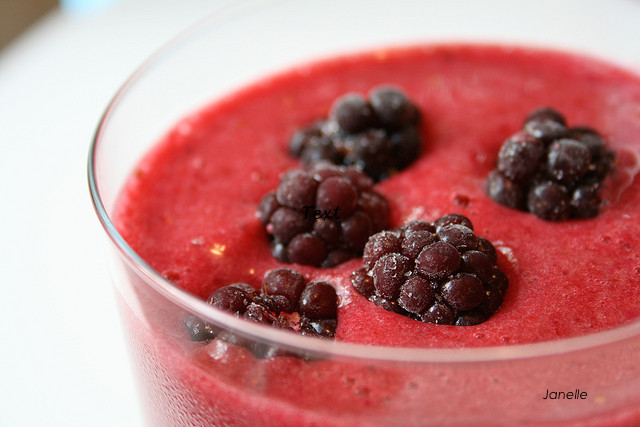
Chronic inflammation in the body leads to advanced aging and disease. It can be caused by many different factors including diet, allergy, stress, or injury. Determining cause allows us to take steps to manage or eliminate the problem and the foods we eat are key in treating any physical condition, including inflammation.
There are some foods that we know cause inflammation in the body: sugars, trans fat, dairy, alcohol, and chemicals in food, among others. We can avoid them if we know what they are.
If you are concerned about inflammation, whether you are feeling its effects or just want to support your immune system, here is a delicious smoothie to do that.
Let’s Review The Ingredients
Berries contain antioxidant phytonutrients called flavonoids (specifically, anthocyanin) in their skins that exhibit anti-inflammatory properties. They are the pigment that give berries their color.
Dark leafy greens are full of nutrients: vitamins, minerals, and antioxidants that support every system in your body. Magnesium in particular is important for inflammation regulation and kale, spinach, beet greens, okra, and broccoli are especially rich in this mineral.
Ginger is a magical plant. It aids digestion, prevents cancer, eases arthritis pain, and inhibits the formation of arterial plaque through its anti-inflammatory phytochemical gingerol.[1]
Coconut oil is a healthy, nutrient-rich saturated fat that has a positive influence on your body, specifically:
“The anti-inflammatory, analgesic, and antipyretic effects of VCO [virgin coconut oil] were assessed. In acute inflammatory models, VCO showed moderate anti-inflammatory effects on ethyl phenylpropiolate-induced ear edema in rats, and carrageenin-[sic] and arachidonic acid-induced paw edema. VCO exhibited an inhibitory effect on chronic inflammation by reducing the transudative weight, granuloma formation, and serum alkaline phosphatase activity. VCO also showed a moderate analgesic effect on the acetic acid-induced writhing response as well as an antipyretic effect in yeast-induced hyperthermia.”[2]
Chia seeds are high in omega-3 fatty acids (with eight times more than salmon!) which are critical for cell health. These building blocks reduce inflammation, thereby decreasing the risk for cardiovascular and neurodegenerative disease.[3] Flax seeds and walnuts are good substitutions.
Green tea contains antioxidants that reduce inflammation and may inhibit tumor growth. Black tea also reduces inflammation in the body but green tea somewhat more so, probably due to its higher flavonoid content.[4] Green tea has less caffeine than black tea; the level can range from 10-22mg per eight-ounce cup. This is in contrast to black tea which contains 22-28mg of caffeine. (The longer it steeps, the more caffeine is released.)
The Anti-inflammatory Smoothie
Ingredients:
• 1 cup berries of your choice (blueberries, raspberries, cranberries, blackberries, strawberries)
• 1 cup leafy greens of your choice (kale, spinach, beet greens), compressed
• 2-inch (5 cm) piece of ginger
• 1 tablespoon unrefined organic coconut oil
• 1 teaspoon (or more, to taste) of fresh chia seeds
• Green tea, steeped to desired strength
• Honey, maple syrup, or stevia to taste to sweeten, if desired
Directions:
Put all ingredients in a blender and mix well. Drink immediately to enjoy the most nutritional benefits.
For a cold-weather drink that warms, soothes, and has a huge anti-inflammatory impact, try golden milk.
Source
[1] [2] [3] [4]
Pablo Tymoszuk is a soft tissue therapist specialising in remedial, myofascial and dry needling techniques. He also acts as an ergonomic specialist and wellness consultant which has motivated him to co-author the eBook Stop Headaches Naturally.
Together with Dr Margaret Scarlett they present a range of strategies for stopping headaches and migraines without drugs. All strategies are organized in a systematic manner and backed up by references to the scientific literature.





